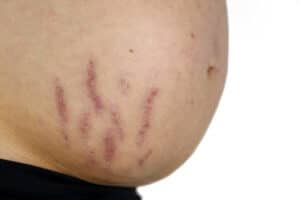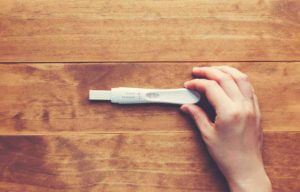You have completed your family planning and are now thinking about sterilization? Here you will find everything you need to know about sterilization.
Table of contents
What Are The Methods Of Female Sterilization?
The procedure necessary for sterilization can be performed as an inpatient or outpatient. Over the years, different methods have developed. However, all methods have in common that the fallopian tube is either cut or closed so that no egg reaches the uterus after ovulation and thus fertilization cannot occur. The egg dissolves while still in the fallopian tube.
In Germany, sterilization is most commonly performed through laparoscopy. This procedure requires a small incision in the belly button. A newer method is hysteroscopic sterilization. This is performed during the laparoscopy of the uterus.
In very rare cases, a large abdominal incision is made. However, this only finds applications when a woman wants to perform sterilization, for example, during a planned cesarean section or other necessary hernia surgery. In addition, there was also chemical sterilization in women, but today it is usually no longer used.
The Clip Method
The clip method of female sterilization is performed during laparoscopy. Closure of the fallopian tubes is done mechanically. The fallopian tubes are compressed and then closed with the help of a titanium clip with a silicone rubber surface.
Advantages
The risk of electrical burn is bypassed. Little tissue is destroyed (about 5mm), which facilitates the desire to reverse the sterilization later.
However, it should still be assumed that it is a one-time decision and cannot be reversed.
Disadvantage
It is considered an unsafe method.
Sterilization By Laparoscopy
This sterilization method is the most commonly used method. It is usually performed on an outpatient basis in a gynecological day clinic or hospital. In some cases, it is also performed on an outpatient basis. The procedure takes about 30 minutes. The procedure should be performed in the middle of the menstrual cycle to exclude a possible pregnancy. This is because an existing pregnancy is not terminated by the procedure.
If sterilization by laparoscopy is not possible, for example, due to adhesions or severe obesity, the procedure is performed through a small abdominal incision. However, this requires a hospital stay of 2-4 days.
Advantages
The procedure leaves only a very small scar, unlike other sterilization methods. In addition, the woman can recover very quickly after the procedure. Also, other abdominal organs can be checked very well during the procedure.
Few Steps To Sterilization
Either a thin special needle is inserted through the abdominal wall or a thin incision is made at the edge of the navel. A guide tube is then inserted through the hole. Carbon dioxide gas is introduced into the abdominal cavity so that the surgeon has a good view and the abdomen unfolds. Sterilization instruments are then introduced through the guide tube into the abdomen. The surgeon can make visual checks on a monitor.
Closure Of The Fallopian Tubes
The actual sterilization is performed by closing the fallopian tubes with heat (heat coagulation), laser (laser coagulation), or electronic current (electrocoagulation).
Sterilization By Abdominal Incision
Sterilization by the abdominal incision is also called laparotomy or mini-laparotomy. However, this method is used for sterilization only in rare cases. It is used when sterilization by laparotomy could not be performed. Reasons for this can be strong overweight or strong adhesions in the abdominal cavity. If the patient is going to undergo abdominal surgery anyway, this method is suitable for simultaneous treatment. However, the decision for sterilization should be made long before this operation and should not be rushed.
The operation is performed as an inpatient in the hospital with general anesthesia or PDA. A hospital stay of 3-4 days will be required.
Advantage
In the case of sterilization by abdominal incision, the health risk is reduced. Because there is no additional anesthesia to the already planned operation.
In most cases, the health insurance company pays for the laparotomy. However, it should still be discussed in advance with the health insurance and the clinic about the assumption of costs.
Risks
If an abdominal operation is performed anyway, most of the risks arising in connection with this operation ( anesthesia, anesthesia,… ). In addition, there is a risk that organs in the abdomen such as the bladder, uterus, or stomach may be damaged by the sterilization instruments due to heat or laser. There may also be an ectopic pregnancy despite the sterilization. The frequency of having an ectopic pregnancy is as high as 50%. Sterilization by the abdominal incision is very difficult or even impossible to reverse, so you should think carefully beforehand if you want to perform such an operation.
Chemical Sterilization
In this method, Quinacrin is injected into the woman’s fallopian tubes. Quinacrine has never been approved in Germany. Therefore, chemical sterilization is not performed here for good reason.
This chemical procedure is also called inflammatory tubal ligation. In the 1970s, chemical sterilization with quinacrine became widespread, especially in less developed countries. It is still used today in some developing countries.
Chemical Sterilization Process
The substance quinacrine is injected into the fallopian tube, thus causing the inflammatory reaction. This reaction leads to the closure of the fallopian tubes by scarring. The method itself is strongly criticized for ethical reasons.
Death After Sterilization
Hypersensitivity to the anesthetic may occur. In the USA, a study has shown that 1-4 out of 100000 women die after sterilization. However, these cases are attributed to cases of narcosis. Chemical sterilization, especially abroad, is strongly discouraged!
Sterilization Or Castration
The Big Difference – Sterilization, Castration
The two terms are often confused. Many people also do not even know that there is a big difference between the two terms.
Sterilization exists both for the female and the male. The aim is to interrupt the path of transport.
The sterilization of the woman offers high security as contraception, but it is not fully 100% safe. The pregnancy rate despite sterilization is higher than suspected, announced a study from the USA. It showed that out of 100 women who have undergone sterilization, 13 still became pregnant.
Safety Is Influenced By Different Factors
Data showed that the safety of sterilization depends on different methods. Among other things, it also depends on the skill and knowledge of the doctor performing the procedure.
In addition, the age of the woman plays a major role. The younger the woman is who wants to be sterilized, the more she still has to expect pregnancy.
Pregnant Despite Sterilization – Who Is Liable?
Here, opinions vary widely. However, it was decided in 2014 by the Higher Regional Court in Hamm that the doctor or clinic is not liable for an unwanted pregnancy despite sterilization if no medical error or lack of information about the pregnancy despite sterilization can be proven. Doctors and clinics usually protect themselves by explaining possible risks in advance. One risk is not having 100% protection against conception despite sterilization.
Costs Of Sterilization
How much does sterilization cost? If you want to have sterilization because of your life plan, for example after you have finished family planning, you have to pay the costs yourself. In case of sterilization during a cesarean section or other abdominal surgery, it is different for each health insurance. The health insurance company will only cover the costs if a pregnancy would be life-threatening for you or would involve serious risks. The final cost depends on the method chosen. Sterilization by laparoscopy costs between 600-1000 €.
What Is Included In The Cost?
These costs include everything that is necessary for the sterilization of the woman. That is consultations, the preliminary examination, the complete staff of the surgeon, the anesthesia, the material, and the medical aftercare.
Costs Of Reversal
If you want to reverse the sterilization, the costs are much higher, because this procedure is more complicated. The costs are between 2.000-4.500€. In this case, no health insurance will cover the costs either.













1 thought on “Female Sterilization”